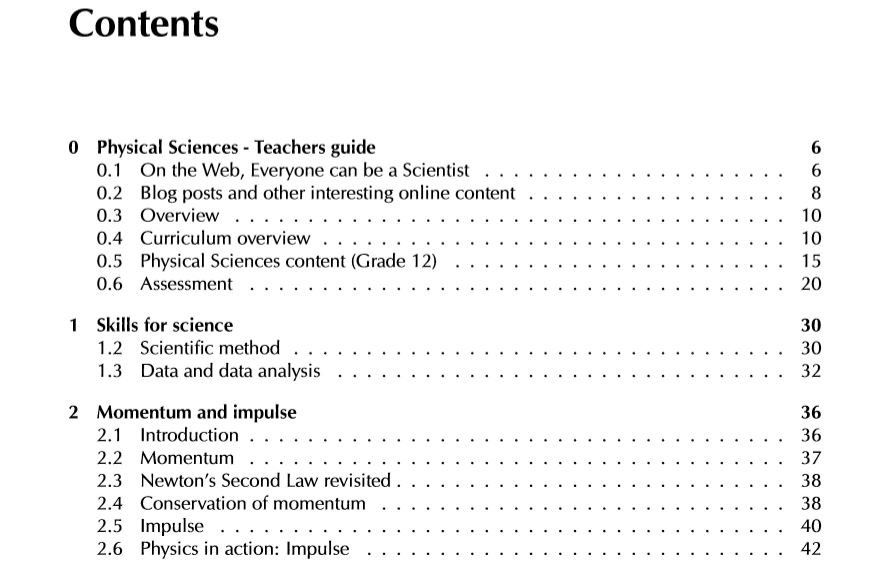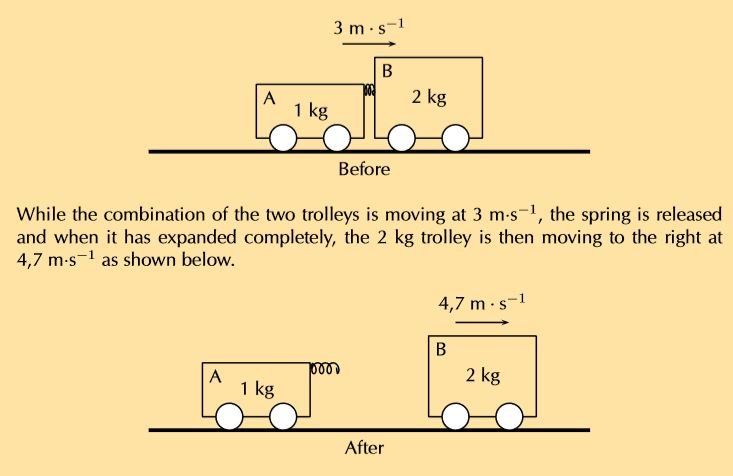Siyavula Physical Science Grade 12 pdf download: When we look outside at everything in nature, look around us at everything manufactured or look up at everything in space we cannot but be struck by the incredible diversity and complexity of life; so many things, that look so different, operating in such unique ways. The physical universe really contains incredible complexity.
Yet, what is even more remarkable than this seeming complexity is the fact that things in the physical universe are knowable. We can investigate them, analyse them and understand them. It is this ability to understand the physical universe that allows us to transform elements and make technological progress possible.
Siyavula Physical Science Grade 12

Download Siyavula Physical Science Grade 12 (pdf)
Covered on this content
- Chapter 1: Skills for science
- 1.1 The development of a scientific theory
- 1.2 Scientific method
- 1.3 Data and data analysis
- 1.4 Laboratory safety procedures
- Chapter 2: Momentum and impulse
- 2.1 Introduction
- 2.2 Momentum
- 2.3 Newton’s Second Law revisited
- 2.4 Conservation of momentum
- 2.5 Impulse
- 2.6 Physics in action”:” Impulse
- Practice this chapter
- Chapter 3: Vertical projectile motion in one dimension
- 3.1 Introduction
- 3.2 Vertical projectile motion
- 3.3 Chapter summary
- End of chapter exercises
- Practice this chapter
- Chapter 4: Organic molecules
- 4.1 What are organic molecules?
- 4.2 Organic molecular structures
- 4.3 IUPAC naming and formulae
- 4.4 Physical properties and structure
- 4.5 Applications of organic chemistry
- 4.6 Addition, elimination and substitution reactions
- 4.7 Plastics and polymers
- 4.8 Chapter summary
- End of chapter exercises
- Practice this chapter
- Chapter 5: Work, energy and power
- 5.1 Introduction
- 5.2 Work
- 5.3 Work-energy theorem
- 5.4 Conservation of energy
- Exercises
- 5.5 Power
- 5.6 Chapter summary
- End of chapter exercises
- Practice this chapter
- Chapter 6: Doppler effect
- 6.1 Introduction
- 6.2 The Doppler effect with sound
- 6.3 The Doppler effect with light
- 6.4 Chapter summary
- End of chapter exercises
- Practice this chapter
- Chapter 7: Rate and Extent of Reaction
- 7.1 Introduction
- 7.2 Rates of reaction and factors affecting rate
- 7.3 Measuring rates of reaction
- 7.4 Mechanism of reaction and catalysis
- 7.5 Chapter summary
- End of chapter exercises
- Practice this chapter
- Chapter 8: Chemical equilibrium
- 8.1 What is chemical equilibrium?
- 8.2 The equilibrium constant
- 8.3 Le Chatelier’s principle
- 8.4 Chapter Summary
- End of chapter exercises
- Practice this chapter
- Chapter 9: Acids and bases
- 9.1 Acids and bases
- 9.2 Acid-base reactions
- 9.3 pH
- 9.4 Titrations
- 9.5 Applications of acids and bases
- 9.6 Chapter summary
- Practice this chapter
- Chapter 10: Electric circuits
- 10.1 Introduction
- 10.2 Series and parallel resistor networks (Revision)
- 10.3 Batteries and internal resistance
- 10.4 Evaluating internal resistance in circuits
- 10.5 Extension”:” Wheatstone bridge [Not examinable]
- 10.6 Chapter summary
- End of chapter exercises
- Practice this chapter
- Chapter 11: Electrodynamics
- 11.1 Introduction
- 11.2 Electrical machines – generators and motors
- 11.3 Alternating current
- 11.4 Chapter summary
- End of chapter exercises
- Practice this chapter
- Chapter 12: Optical phenomena and properties of matter
- 12.1 Introduction
- 12.2 The photoelectric effect
- 12.3 Emission and absorption spectra
- 12.4 Chapter summary
- End of chapter exercises
- Practice this chapter
- Chapter 13: Electrochemical reactions
- 13.1 Revision of oxidation and reduction
- 13.2 Writing redox and half-reactions
- 13.3 Galvanic and electrolytic cells
- 13.4 Processes in electrochemical cells
- 13.5 The effects of current and potential on rate and equilibrium
- 13.6 Standard electrode potentials
- 13.7 Applications of electrochemistry
- 13.8 Chapter summary
- Practice this chapter
- Chapter 14: The chemical industry
- 14.1 Introduction
- 14.2 Nutrients
- 14.3 Fertilisers
- 14.4 The fertiliser industry
- 14.5 Alternative sources of fertilisers
- 14.6 Fertilisers and the environment
- 14.7 Chapter summary
- End of chapter exercises
- Practice this chapter
- Source: https://www.siyavula.com/read/science/grade-12

View all #Physical-Sciences-Grade 12 Study Resources
We have compiled great resources for Physical Sciences Grade 12 students in one place. Find all Question Papers, Notes, Previous Tests, Annual Teaching Plans, and CAPS Documents.
Hey, Grade 12 Learners. My Courses portal has everything you needed to ace your matric exams, tests, assessments, research tasks, and assignments. Feel free to explore all resources for grade 12 learners, such as Study Guides, Department of Basic Education Past Exam Papers with Memos, and Speech Topics.
My Courses also has resources for other grades such as : Grade 11, Grade 12, and Grade 10; as well as On-demand Question and Answers for all subjects.





